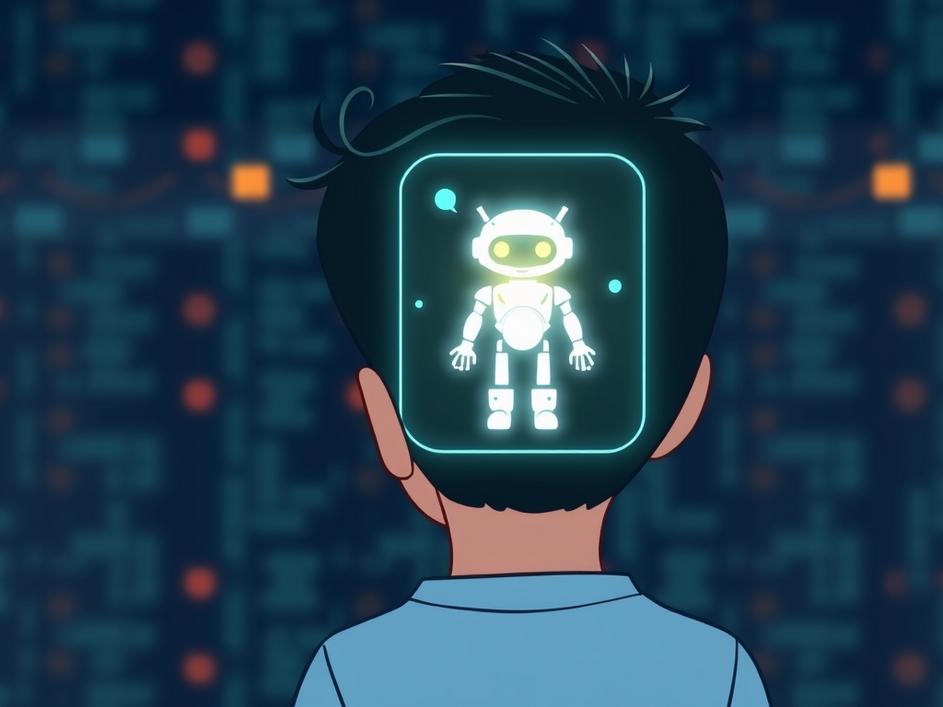


We are a digital agency helping businesses develop immersive, engaging, and user-focused web, app, and software solutions.
2310 Mira Vista Ave
Montrose, CA 91020
2500+ reviews based on client feedback

What's Included?
ToggleArtificial intelligence chatbots are everywhere these days. One of the most popular platforms, Character.AI, lets people talk to all sorts of AI-powered “”characters.”” It’s a place where you can chat with a virtual historical figure, a fictional hero, or even a personalized friend. But recently, the company made a very important announcement: they are moving to ban children under 18 from using their platform. This isn’t just a small tweak to an app; it’s a significant decision that reflects a growing awareness of AI’s role in our lives, especially for young people. This move changes things for a lot of users and for the company itself. It points to a bigger conversation we all need to have about tech and kids. It makes us stop and think about what AI truly means for those still growing up.
So, why this sudden shift? It’s not really sudden if you’ve been paying attention to the chatter around AI and youth. People have been talking about kids and AI for a while now. Think about how young minds work. They are still figuring things out, learning about the world, and building their own sense of self. An AI, no matter how clever, doesn’t have real feelings, morals, or a true understanding of human complexities. This can be confusing, or even harmful, for someone still learning right from wrong, or reality from fiction. Chatbots can be super convincing. They can pretend to be a close friend, a wise mentor, or even something more questionable. The company probably saw concerns growing. They want to be responsible. They likely realized that letting kids talk to unfiltered AI characters without clear boundaries could lead to problems. It’s about protecting the youngest users from things they might not be ready for. This decision isn’t just about what AI can do, but about what it should do, especially for kids. It’s a complex area, and Character.AI is taking a firm stand.
From my point of view, this move, while perhaps a bit late for some, is definitely a step in the right direction. It shows that Character.AI is taking some real responsibility for its impact. In the world of tech, it’s often easy for companies to just push out new stuff and worry about the problems later. But with AI, the stakes feel much higher. This isn’t just another fun app. It’s a technology that can interact in very personal and profound ways. By setting an age limit, the company is saying, “”Hey, we know there’s a big difference between a grown-up interacting with AI and a child doing the same.”” It acknowledges that kids are vulnerable. They might not understand the difference between a real person and an AI. They might not know how to handle upsetting, misleading, or even manipulative information they get from a chatbot. So, this decision tells me they’re listening to the worries out there. It’s a sign that they’re trying to put safety first, even if it means losing some users or dealing with user backlash. That’s a brave thing to do in a market that’s always chasing more growth. It sets a precedent, too, for other AI companies to consider their own policies regarding young users and the unique challenges they face.
But let’s be real, banning kids under 18 isn’t a perfect fix, and it brings its own set of challenges. First, how do you really enforce an age ban online? Kids are smart. They find ways around rules. Age verification is notoriously hard to get right on the internet. Will they ask for IDs? That’s a huge hurdle for privacy and user experience. It could also block legitimate users. Then there’s the nuance of “”under 18.”” A 17-year-old is very different from an 8-year-old. Are they both equally susceptible to the same issues from AI? Maybe, maybe not. Some older teens might use these tools for creative writing, learning, or just harmless fun. Stripping that away for everyone under 18 might feel like throwing the baby out with the bathwater for some. It also highlights a bigger problem: there’s no single rulebook for AI yet. Companies are making these calls on their own. This isn’t an industry-wide standard, so it creates a patchwork of rules that can be confusing for parents and kids alike. It also raises questions about what kind of guidance and education we should be giving kids about AI, instead of just blocking access entirely. It’s a complicated picture, with no easy answers for a complex issue.
This move by Character.AI isn’t just about their platform; it’s a loud bell ringing for the entire AI industry. It forces all companies building chatbots and interactive AI to look closely at their own user base and their safety measures. Are they doing enough to protect younger users? This incident puts a spotlight on the fact that we’re still figuring out the ground rules for AI. It’s a very new technology, and its impact on human development, especially for children, is something we’re only just beginning to truly understand. This also shifts some of the responsibility back to parents. While companies need to build safer products, parents also have a huge role to play. Talking to kids about AI, setting clear boundaries for screen time, and understanding what they’re doing online – these actions are more important than ever. We can’t rely solely on tech companies to be the digital babysitters for our children. This is a shared responsibility, a community effort. Everyone has a part in making sure the next generation grows up with technology in a way that helps them, rather than causes harm. It’s about building a healthier digital environment for everyone, starting with our kids and setting smart precedents.
So, where do we go from here? We can expect to see more of this kind of discussion. Other AI platforms might follow Character.AI’s lead, or they might try different approaches, like stronger content filters or AI tools specifically designed for younger audiences. There might even be louder calls for government regulation, though that’s usually a slow and complex process to implement. This conversation about AI and children is just getting started, and it’s a critical moment for us to decide what kind of relationship we want our kids to have with these powerful new tools. Character.AI’s decision to ban users under 18 is a big step. It highlights the serious questions we all face as AI becomes more common in our daily lives. It’s not a perfect solution, but it forces us to think harder about safety, responsibility, and the unique needs of young people in a rapidly changing digital world. This move is a clear signal that the time for figuring out these big questions is now. We all need to be part of the discussion to make sure AI grows up with us in a safe and helpful way for everyone, especially our children, who deserve the best protection we can offer in this new digital landscape.



Leave a reply